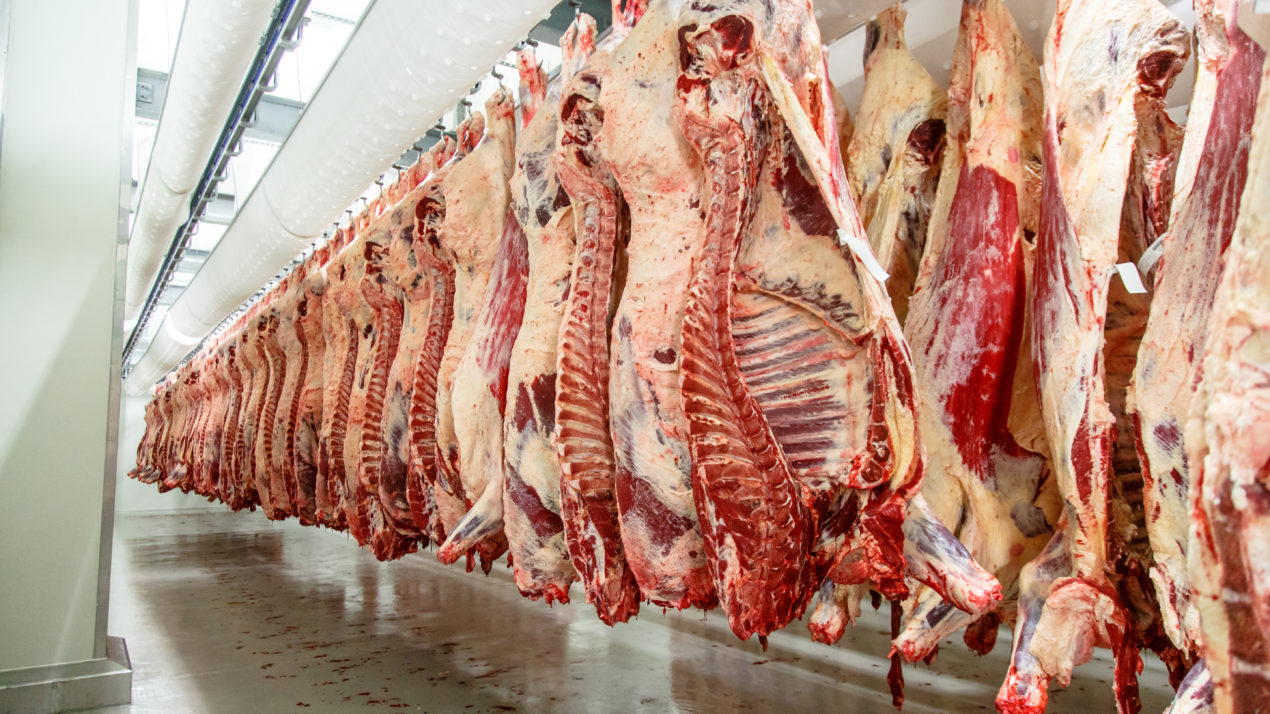
Prepared and written by Jeff Swenson, DATCP Livestock and Meat Specialist. The Market Update draws information from several sources, including trade publications, radio broadcasts, agricultural news services, individuals involved in the industry as well as USDA NASS and AMS reports.
■ Packers may be working on the largest weekly harvest we have seen in recent weeks. Boxed beef prices continue to increase and harvest numbers haven’t kept up with orders from retailers. Last week’s estimated harvest was 639,000 head, 2,000 less than the previous week. Live steer weights are nine pounds lighter than last year, although carcass weights were two pounds higher than last week. There is absolutely no doubt that demand for beef remains strong. CattleFax Vice President of Industry Relations and Analysis Kevin Good spoke at the Cattle Industry Conference in Nashville last week and said both consumer and wholesale demand are at 30 year highs. Good said prices for all classes of cattle are projected to trade higher over the next three years. Beef exports continue at the slow pace we’ve seen in the past weeks with sales for 11,100 metric tons according to the latest report.
■ Last week’s estimated hog harvest was 2.415 million head, and that is 94,000 more than the previous week. July harvest was 10 percent below 2020. There’s typically an increase in hog supply as we head into fall, and while we might see supply grow, it’s unlikely we’ll see a huge jump in market hog numbers. There are some that claim pork demand is slowing because the pork cutout value has backed off its recent highs. Loins, butts, and bellies were higher Thursday, with the cutout value posted at $121.40. The most recent weekly trade data showed sales of 20,000 metric tons of pork. Mexico was the lead buyer, placing orders for 6,900 metric tons. China was absent from the sales roster this week.
■ July retail prices for beef and pork were just over 10 percent higher than last year. Beef averaged $7.53/pound in July. The average retail prices began 2021 at $6.40/pound. Pork averaged $4.60/pound in July compared to the January 2021 price of $4.10/pound. While the retail price of meat continues to rise, the Bureau of Labor Statistics (BLS) reports the U.S. consumer price index rose 0.5 percent in July, the lowest month-on-month rise since February. The BLS also reported total non-farm payroll employment rose by 943,000 in July, and the unemployment rate declined by 0.5 of a percentage point to 5.4 percent. Financial markets have been watching the increased COVID 19 cases and concerns about the Delta strain slowing economic recovery. Consumer sentiment for August was 70.2, 13.5 percent lower than July and 5.3 percent below July 2020.
■ Recent rains helped improve Wisconsin row crops. Corn rated good to excellent in the state was up three percentage points at 80 percent. Soybean condition was 77 percent good to excellent, three percentage points above last week. All hay condition was rated 73 percent good to excellent, one percentage point below last week. Pasture condition was rated 62 percent good to excellent, two percentage points above last week.
■ Choice beef breed steers and heifers at Wisconsin and surrounding state auction markets were mostly steady. High-yielding, high-grading cattle brought $108.00 to $126.00/cwt with highs to $130.00/cwt and a few above. Choice and Prime Holstein steers were mostly steady, bringing $92.00 to $115.00/cwt. There were some packages of Holstein steers selling above $115.00/cwt. Silage fed, under finished, or heavy dairy breed steers brought $70.00 to $94.00/cwt. Dairy x Beef steers were mostly $90.00 to $124.00/cwt. Cows were lower at $39.00 to $60.00/cwt. Blemish free cows in fleshier condition were selling to the low $70.00s/cwt. Doubtful health and thin cows were bringing $39.00/cwt and down. Dairy breed bull calves were lower at $30.00 to $75.00/cwt with heavier, well cared for calves up to $125.00/cwt. Beef and beef cross calves brought up to $300/cwt. Market lambs sold to $230.00/cwt.
Find more DATCP news in our newsroom, on Facebook, Twitter, and Instagram.

